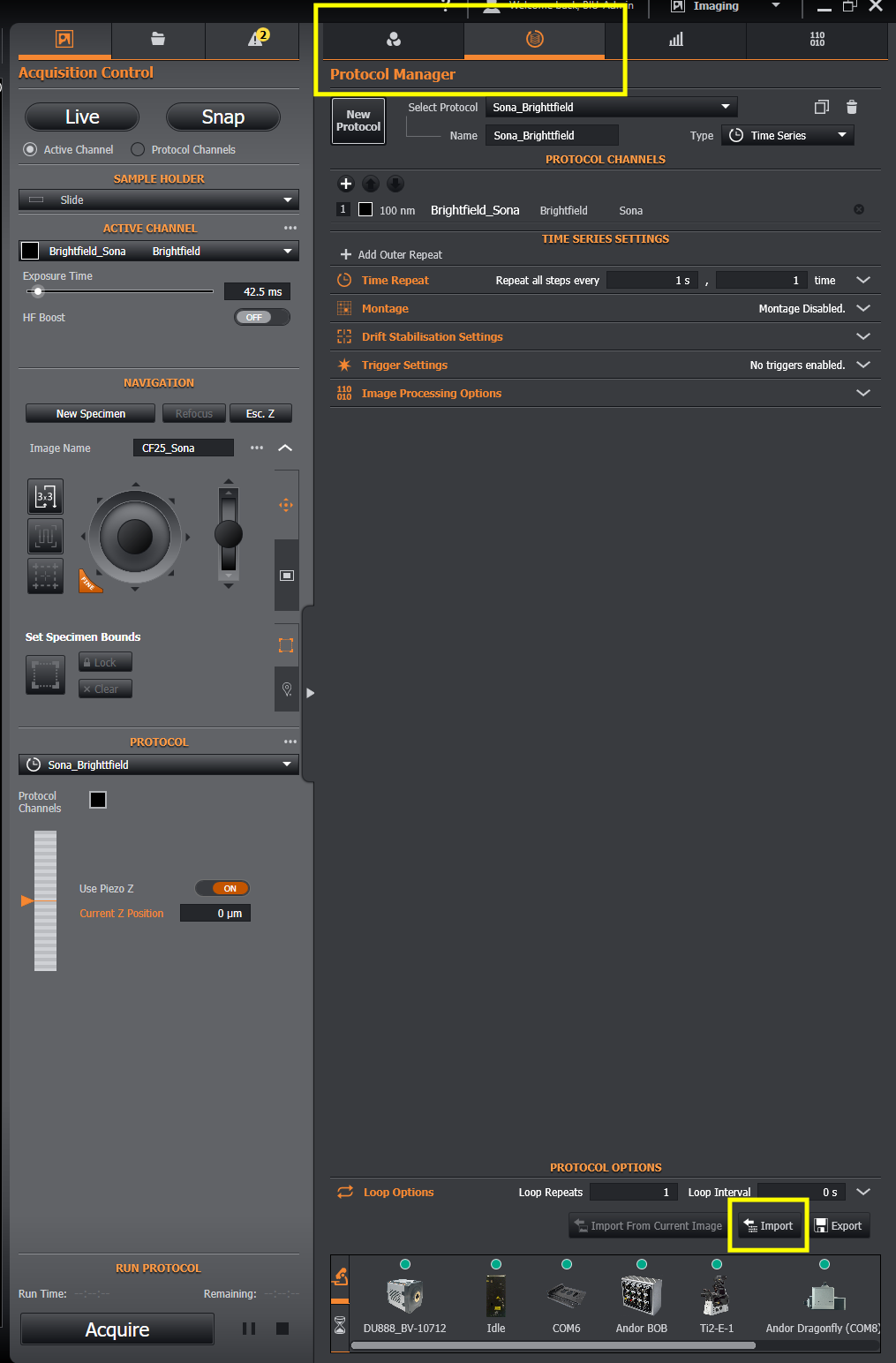Andor Dragonfly Sona camera settings
The Zyla camera on the Andor Dragonfly has been sent for service at Andor in Belfast. We currently (Sep 9th, 2022) have a Andor Sona camera on loan to replace the Zyla while we wait.
The Sona is the Sona 4.2B-6model, meaning it has the same physical chip size / pixel size / camera resolution as our own Zyla but a slightly different quantum efficiency curve (i.e. higher sensitivity). So exposure times will need to be adjusted, although quite possibly less than between samples stained on different days.
As the Fusion software settings are group specific you will need to import channel settings for the Sona (or make new channel settings yourself - in this case please do NOT change the existing channels, but create a copy of them and modify the copy). Probably the easiest way to get started using the Sona would be:
|
|
|---|
Please note that all settings are defaults and you will need to modify as ususal (exposure time, laser power, TIRF penetration depth) to suit your sample.
